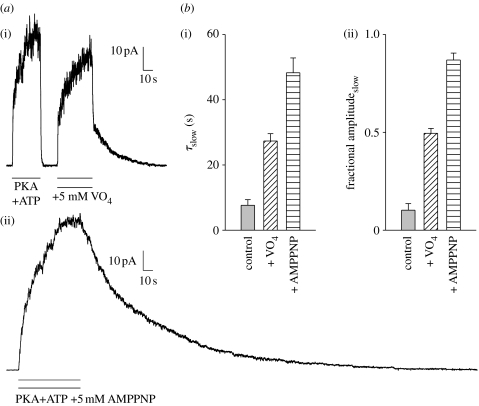Figure 3.
Blocking the hydrolytic cycle slows channel closing. (a) Because opening rate falls to virtually zero after ATP removal, time course of current decay measures channel closing rate. (i) Time constant for current decay in control conditions is less than 1 s, but a slow component (τslow=21 s) appears if opening occurs in the presence of orthovanadate (VO4). In other ABC transporters VO4 inhibits ATPase activity by acting as an analogue of the pentacovalent transition state intermediate of hydrolysis. (ii) Adenosine 5′-(β,γ-imido)triphosphate (AMPPNP) can also ‘lock’ channels open. (b,c) Mean (±s.e.m., n≥15) (i) time constant (τslow) and (ii) fractional amplitude of the slow component.

